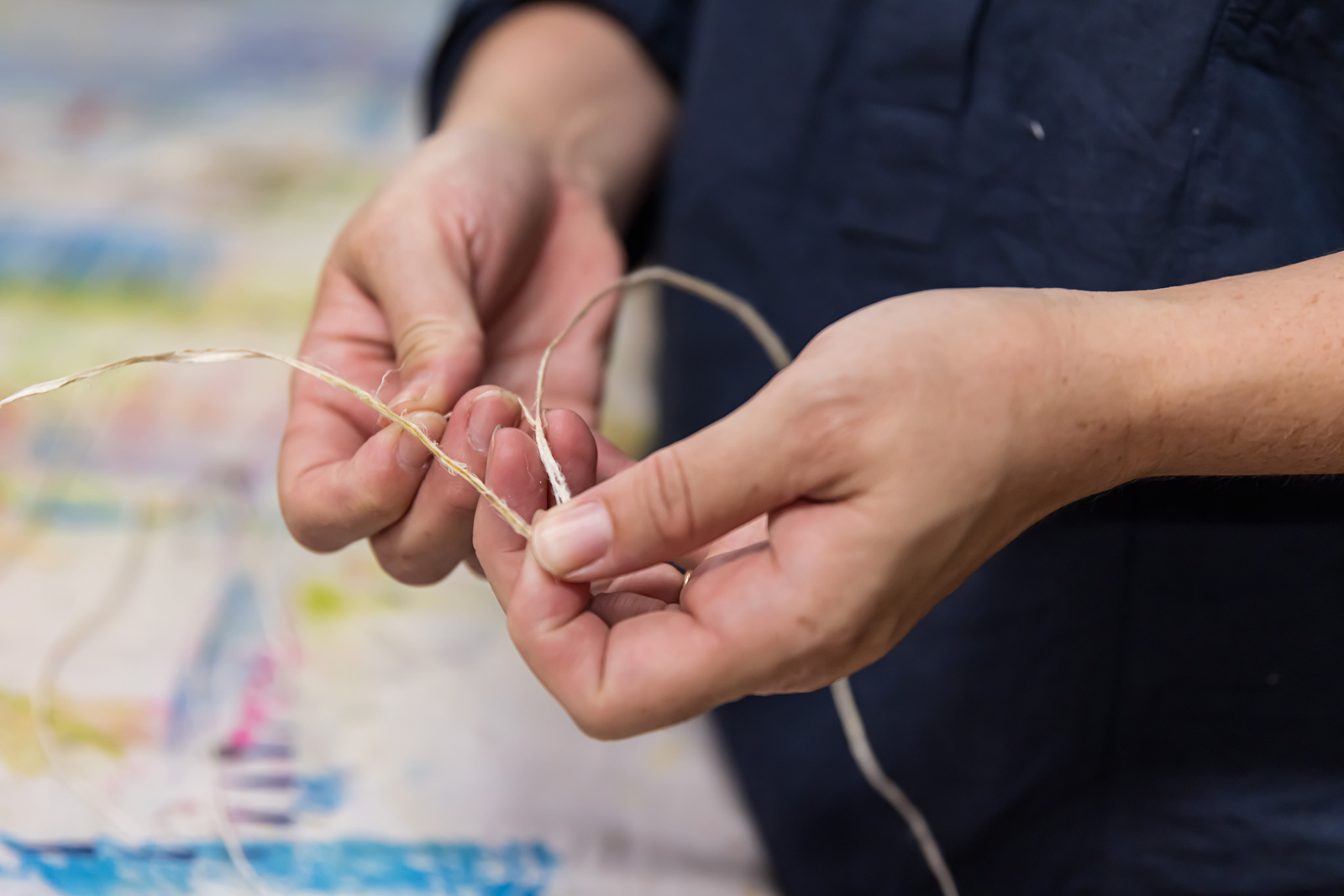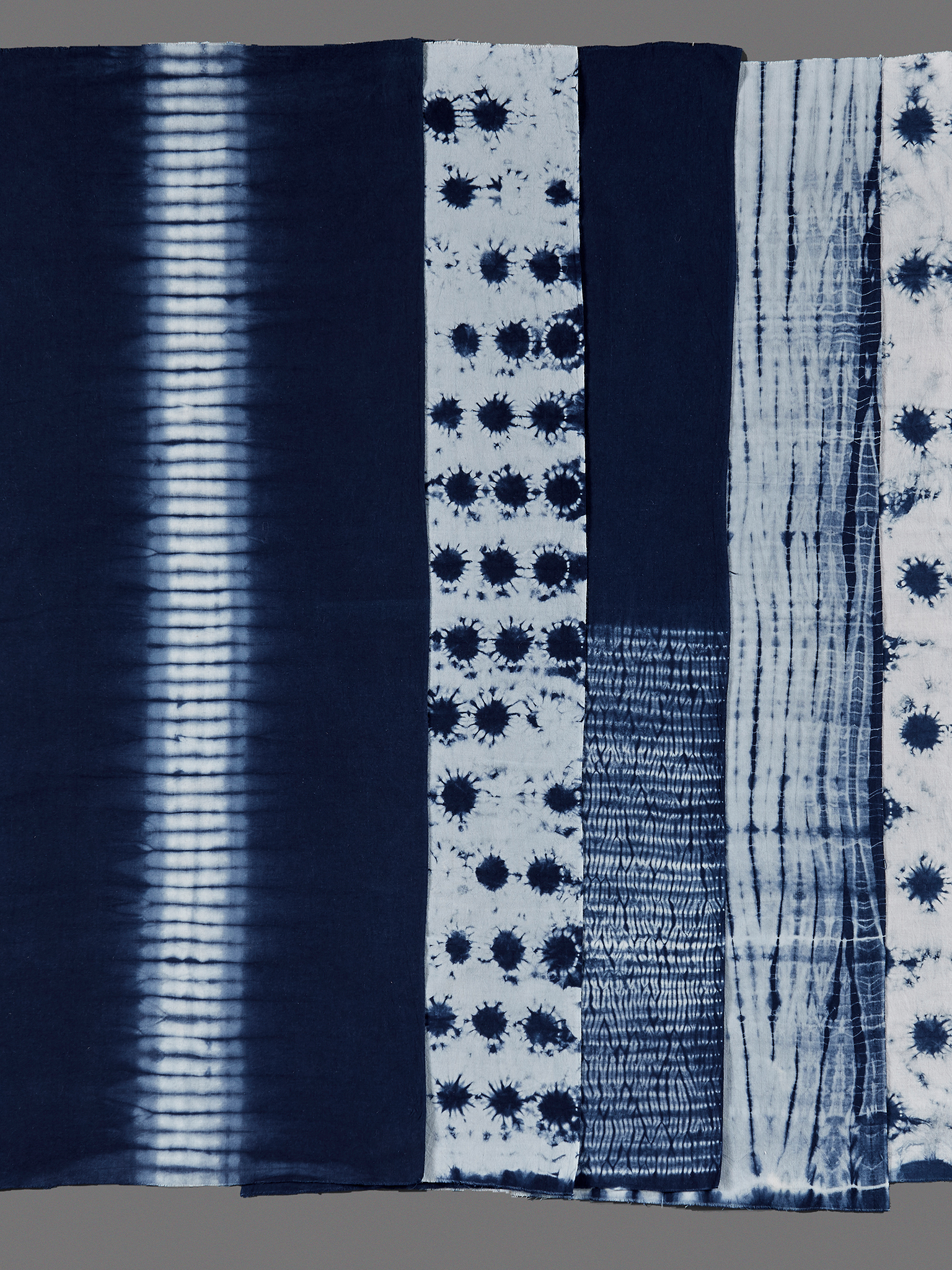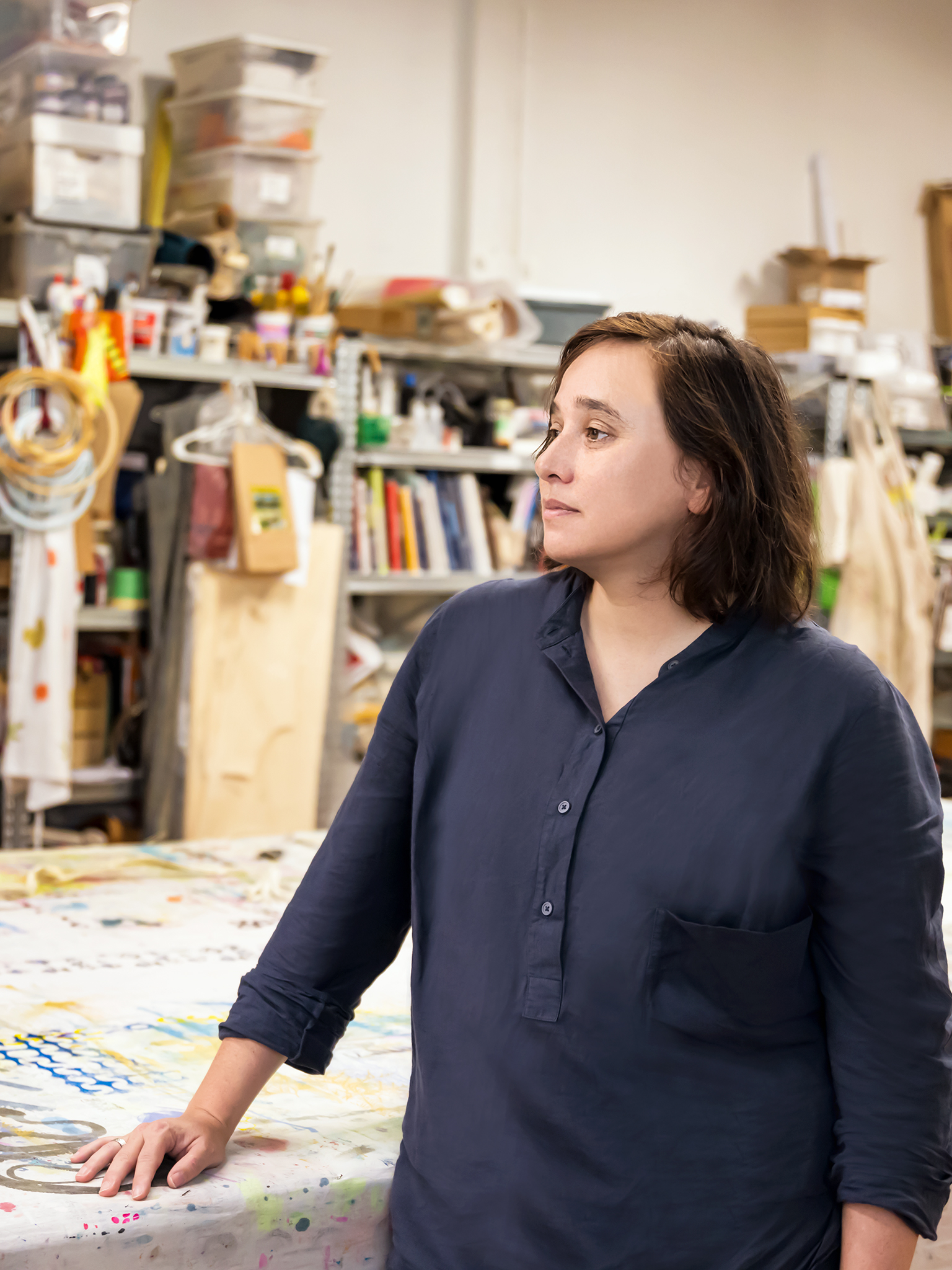Dream Weaver
by Alanna Mitchell
photography by Horst Herget
Ganaele Langlois, Chair of York University’s Department of Communication & Media Studies, didn’t intend to become fascinated with the ancient art form of handmade textiles. Or with examining the myriad and unique ways that textiles provide insight into complex relationships. Nor did she expect to write a book about it, How Textile Communicates: From Codes to Cosmotechnics, published by Bloomsbury.
In fact, Langlois, an expert in ultra-modern digital media, grew up just outside Paris with a decided dislike of working with fabrics. “I was taught sewing as a kid and I hated it. My grandmother was a cross-stitcher and I hated that,” she says, sitting at a table in the Contemporary Textile Studio Co-op in Toronto. “I came to textiles very late.”
She was on the tenure track at York in 2014, immersed in research on new media and social media, grappling with the blizzard of disinformation and hatred on those platforms and worried about the implications for democracy. It was depressing. And it all revolved around the ways humans communicate with each other. She needed a break. A hobby.
So she thought about other ways that humans have communicated over time, and signed up to learn printmaking on paper. Except she ticked the wrong box, and ended up at a textile class instead. It was here, at what is now her research space at the textile studio co-op on Richmond Street West, just off Spadina Avenue.

And she was entranced. Here was a means of communication that humans have been using since before we invented any alphabets, one of humanity’s most ancient cultural forms. A question loomed large: in an age of television, Facebook and TikTok, can handmade textiles still teach us anything?



As she speaks, Langlois leaps up to check a huge pot boiling on a hot plate in the studio. She is making a dye out of crabapple tree branches and doesn’t want it to boil too fast.
She says she found not just support from colleagues at York to follow her research instincts, but “absolute” freedom. “The message was pretty clear, to do whatever research you wanted, whatever form you can take. As a new faculty member, it was, do whatever you want. What matters is that you do it.”
Rachel MacHenry, a colleague at the School of Fashion at Toronto Metropolitan University who is a designer and researcher in textiles, says Langlois is a pioneer in understanding the deep levels of communication that take place with the creation of a textile.

“I feel this is a really new way of looking at what textiles can do and what they mean for the communities that they come from, and also how they can interact with the world at large,” MacHenry says.
Granting agencies were a harder sell for Langlois than colleagues. “It was a bit of a far-fetched idea,” she says. But she eventually won a SSHRC Insight Development Grant and an Ontario Arts Council Grant. The money allowed her to travel to Peru, Japan and France to examine contemporary handmade textiles.
She pulls several out of a carryall bag to show me. First is a piece from the Quechua of the Andes. Hand-woven on a simple back-strap loom in undyed alpaca wool of creams and browns, it is dominated by diamonds and squares, repeated in a complex pattern. Along the edges are stylized snakes, symbolizing the world of the dead, birds symbolizing the world of the gods and alpacas for the world of humans.

It tells a story, some of whose meaning is kept secret by the weavers. These handmade textiles are precious and are under threat in this part of the world as inexpensive machine-made replicas become more common for the tourist trade. But each piece of the pattern holds a clue to an experience that the maker is passing on.
“What I’m trying to argue is that it has always been its own way of communication. For the longest time, it enabled a kind of cultural resilience – throughout millennia – through colonization, through all the horrors,” Langlois says. “So it is important, and especially as we’re thinking about the end of the world and survival and resilience, then these kinds of practices can teach us something.”
The next piece is hand-woven white cotton embroidered in bright colours by women in the Shipibo community in the Peruvian Amazon. The colours leap off the fabric: bright red, psychedelic lime green, neon orange.
The images represent a personal story, a collective history and a shamanistic spiritual story combined into one, Langlois says. They resemble a map. And looking at them is a form of travel, although it’s not clear to an outsider precisely where you are going, just that you are being guided.
The women who create the work take part in a ritual, imbibing a few drops of plant extracts in order to be open to visions of the cosmos and understand what the patterns mean before they make them – and eventually communicate them in thread.
Next, she shows me an intricately worked bedsheet made in France of snowy linen. Along the top portion of the sheet is cut work, meaning embroidered designs with spaces cut from the fabric. Some of the decoration is white-on-white embroidery in a running floral design. All of it is meant to be seen in only the most intimate space: the marital bedroom. But the information contained within the embroidery is that the sheet, and therefore the marriage, is meant to last and be enjoyed over time.
“It’s a commitment to your life, to a household, to an aesthetic,” Langlois says.
As she explains how she came to analyze this rich method of communication that her own academic discipline has ignored, she begins to reminisce. Just as these handmade textiles represent a powerful archive of information through the ages – like a fibrous hard drive encoded with data – they also represent the tender, one-on-one passing down of information through the generations: a mother to her daughter, a father to his son.
She is a living example. The cross-stitched armchairs her grandmother made, with their complex classical patterns, are still in the family. Her grandfather, who spent part of his career selling wool suiting cloth, passed down his knowledge of fabric to her. He was, she says, always appreciative of a good weave. ■